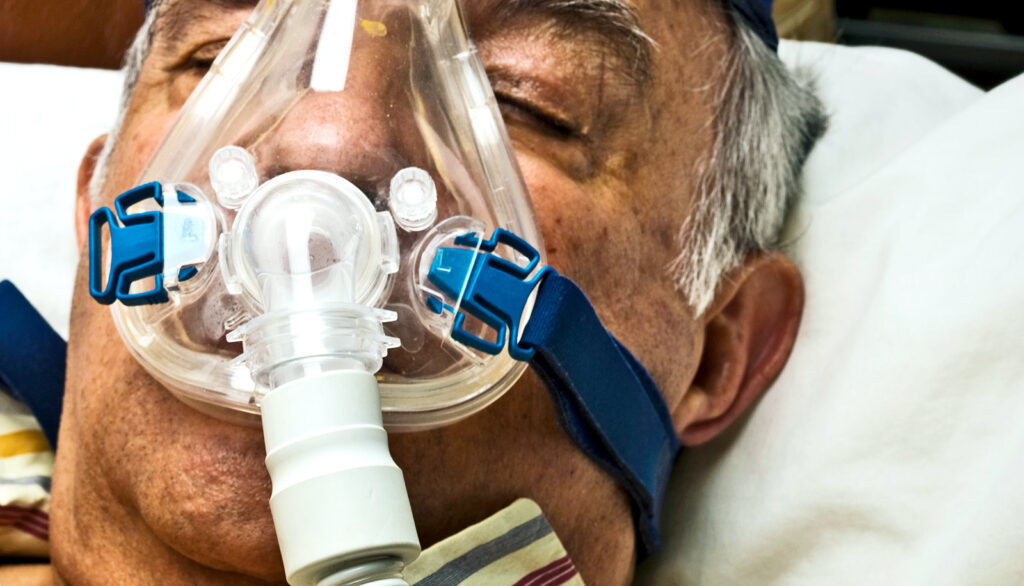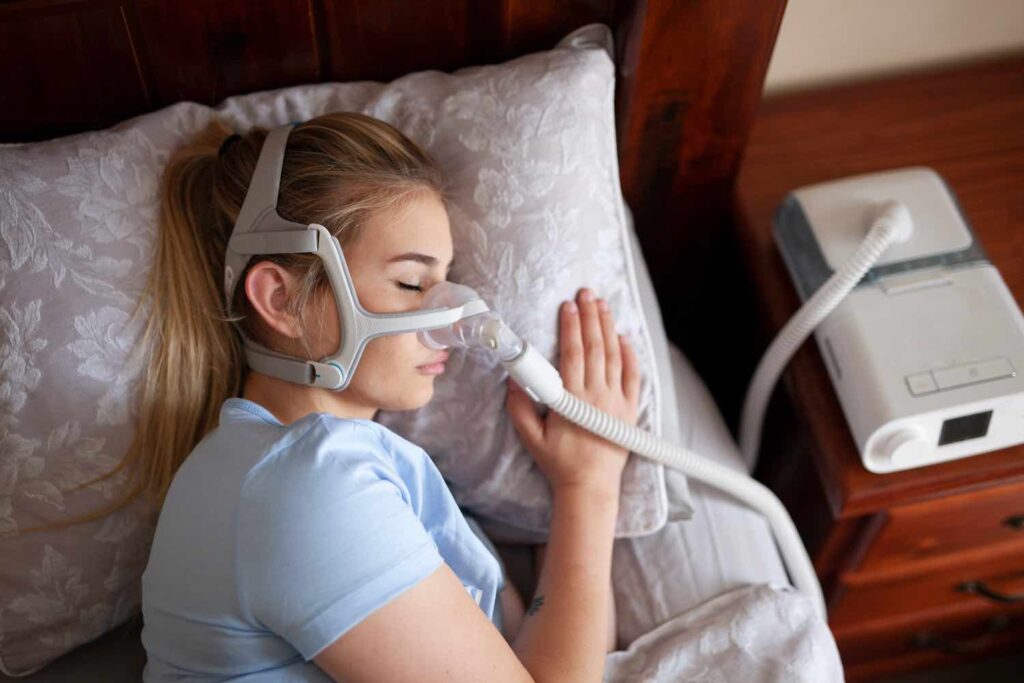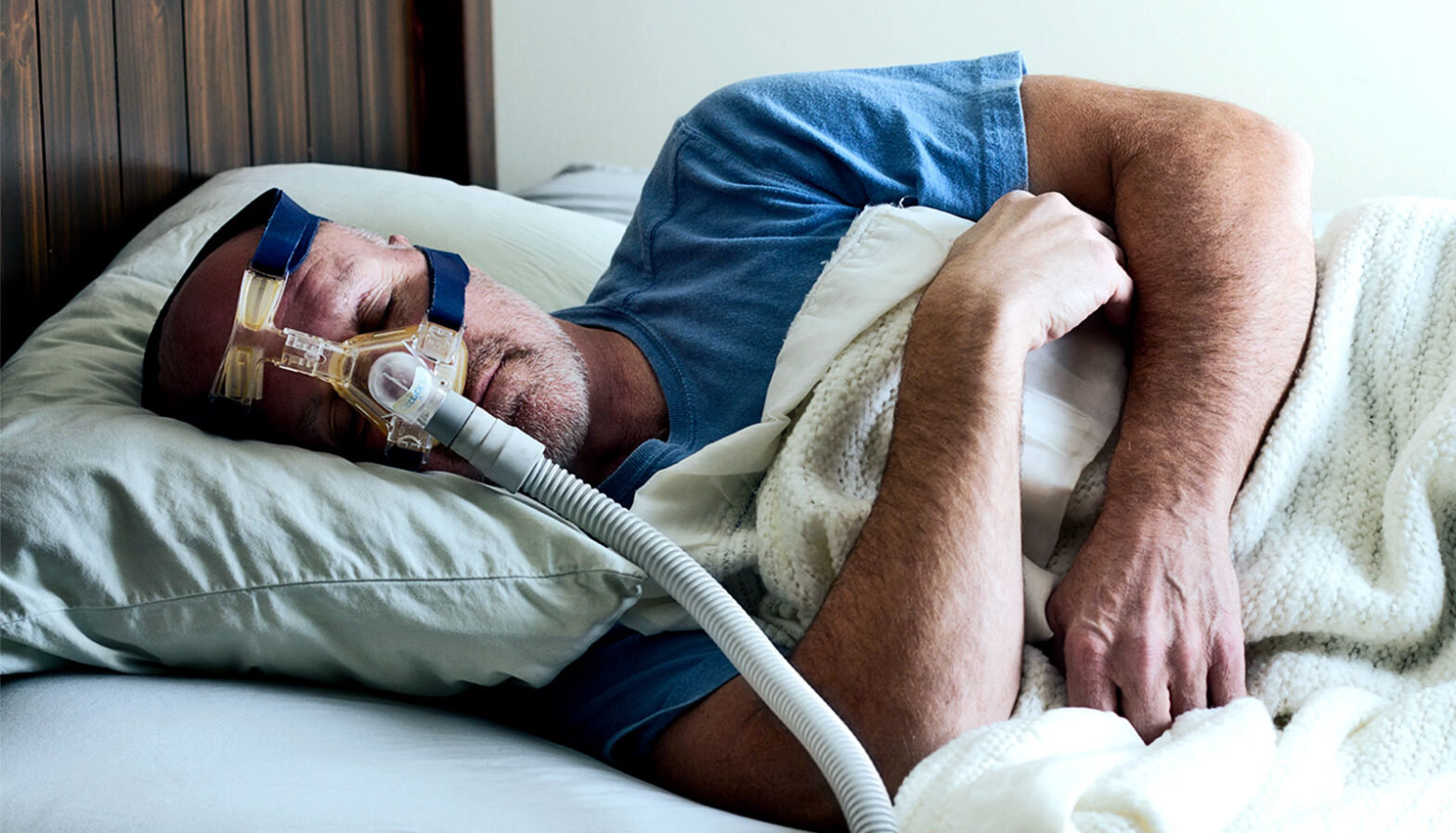Sleep apnea is a sleeping issue that, if left untreated, can lead to major health problems such as high blood pressure and heart problems. Untreated sleep apnea causes breathing to stop regularly throughout sleep, resulting in loud snoring and fatigue during the day, even after a full night’s sleep. Sleep apnea can affect anyone, although it is particularly common in overweight older men.
Understanding Sleep Apnea
Sleep apnea is a dangerous sleep disorder in which a person’s breathing is interrupted while sleeping. Untreated sleep apnea causes people to stop breathing periodically at night, often hundreds of times.
If left untreated, sleep apnea symptoms can lead to various health issues, including hypertension (high blood pressure), stroke, cardiomyopathy (enlargement of the heart’s muscular tissue), heart failure, diabetes, and heart attacks. Untreated sleep apnea can also cause occupational impairment, work-related accidents, car accidents, and academic underachievement in children and teenagers.
Obstructive and central sleep apnea are the two types of sleep apnea. The more prevalent of the two is obstructive sleep apnea. Obstructive sleep apnea is characterized by repeated episodes of full or partial upper airway obstruction during sleep.
During an apneic episode, the diaphragm and chest muscles work harder to open the airway as the pressure rises. Breathing frequently restarts with a loud gasp or jolt of the body. These episodes can disrupt sleep, limit oxygen delivery to essential organs, and induce cardiac rhythm disturbances.
The airway is not closed with central sleep apnea, but the brain fails to instruct the muscles to breathe due to instability in the respiratory control center. Central apnea is associated with central nervous system function.

Who is Affected by Sleep Apnea
Sleep apnea affects approximately 25% of males and roughly 10% of women. Sleep apnea can affect people of all ages, including babies and children, but it is most common in people over 50 and those who are overweight.
Certain physical characteristics and clinical aspects are typical in obstructive sleep apnea patients. Excessive weight, a large neck, and structural abnormalities that reduce the diameter of the upper airway, such as nasal obstruction, a low-hanging soft palate, enlarged tonsils, or a small jaw with an overbite, are examples of these.
Treatment and Management
The following are some ways to treat and manage sleep apnea effectively;
- Conservative therapies: Conservative therapy may be all that is required in mild cases of obstructive sleep apnea.
- People who are overweight can benefit from decreasing weight. Even a 10% weight decrease can lower the number of apneic occurrences for most patients. However, reducing weight with untreated obstructive sleep apnea might be challenging due to increased appetite and metabolic abnormalities caused by obstructive sleep apnea.
- Individuals with obstructive sleep apnea should avoid alcohol and certain sleeping drugs, which increase the likelihood of the airway collapsing during sleep and extend the apneic periods.
- Breathing pauses occur exclusively when certain people with mild obstructive sleep apnea sleep on their backs. In such circumstances, a wedge pillow or other equipment that allows patients to sleep on their side may be beneficial.
- People with sinus difficulties or nasal congestion should use nasal sprays or breathing strips to minimize snoring and increase airflow for more comfortable nocturnal breathing. All patients with sleep problems must avoid sleep deprivation.
- Mechanical treatment: The most common initial treatment for obstructive sleep apnea is positive airway pressure (PAP). PAP therapy requires patients to wear a mask over their nose and/or mouth.
- An air blower pushes air gently through the nose and/or mouth. The air pressure is set just high enough to keep the upper airway tissues from collapsing during sleep. PAP therapy prevents airway closure while in use; however, apnea episodes reoccur if PAP is discontinued or performed incorrectly. Positive airway pressure devices come in various forms and types to meet the individual demands of patients. Among the styles and types are:
The most common PAP device is CPAP (Continuous Positive Airway Pressure). The machine has only one pressure setting. Bi-Level PAP employs one pressure during inhalation and a lower pressure during exhalation (breathing out). Before health insurance covers the bi-level, you must meet a requirement.

This usually implies that the CPAP machine must first be tested without success and the outcomes documented before insurance will cover a bi-level. Auto CPAP or Auto Bi-Level PAP employs a pressure range that self-regulates during use in response to pressure requirements identified by the machine.
- Adaptive Servo-Ventilation (ASV) is a type of non-invasive ventilation used in patients with central sleep apnea to keep the airway open and supply a required breath when necessary.
- Mandibular advancement devices are used to treat patients with mild to moderate obstructive sleep apnea. It is possible to create dental appliances or oral mandibular advancement devices that help prevent the tongue from restricting the throat and/or extend the lower jaw forward.
- These gadgets aid in keeping the airway open during sleeping. If this treatment is right for you, you should consult with a sleep specialist and a dentist (who has experience with dental appliances for this reason).
- A hypoglossal nerve stimulator is implanted under the skin on the right side of the chest, with electrodes tunneled through the skin to the hypoglossal nerve in the neck and intercostal muscles (between two ribs) in the chest.
- Remote control is used to turn on the device before going to bed. The hypoglossal nerve is activated with each breath, the tongue glides forward out of the airway, and the airway is opened.
- Surgery: People with obstructive sleep apnea and others who snore but do not have sleep apnea may benefit from surgical procedures. Outpatient procedures are one of the various types of surgeries performed.
- People who have excessive or deformed tissue impeding airflow through the nose or throat, such as a deviated nasal septum, significantly enlarged tonsils, or a small lower jaw with an overbite that causes the throat to be abnormally narrow, may benefit from surgery.
- These operations are often performed after conservative therapies and a CPAP trial have failed to improve sleep apnea. Surgical procedures include:
Living with Sleep Apne
Sleep apnea, if left untreated, can lead to hypertension, stroke, arrhythmias, cardiomyopathy (enlargement of the heart muscle tissue), heart failure, diabetes, obesity, and heart attacks.
Because sleep apnea is associated with greater blood pressure, it is possible that it can cause arrhythmias and heart failure. In fact, sleep apnea affects around 50% of persons with heart failure or atrial fibrillation.
This is because sleep apnea can result in:
- Repeated episodes of oxygen deprivation (what doctors call hypoxia).
- Carbon dioxide levels fluctuate.
- Direct effects on the heart as a result of variations in chest pressure.
- Increased levels of inflammatory markers
Given the high prevalence of sleep apnea in cardiac arrhythmias and heart failure (it’s virtually a coin flip as to whether the patient has it), specialists advise you to seek medical attention as soon as possible.
